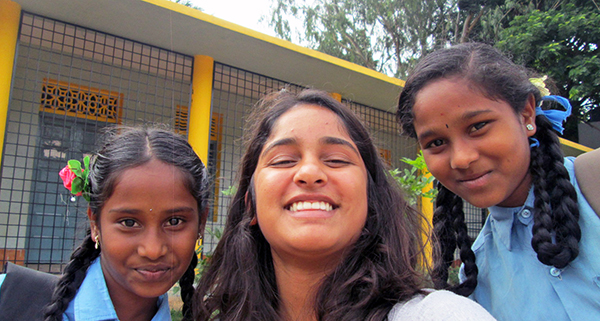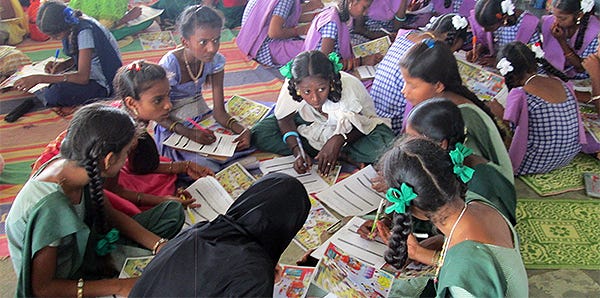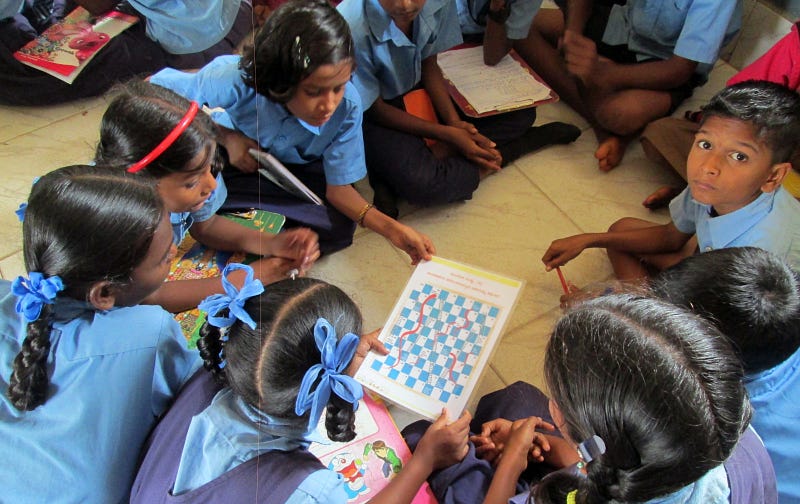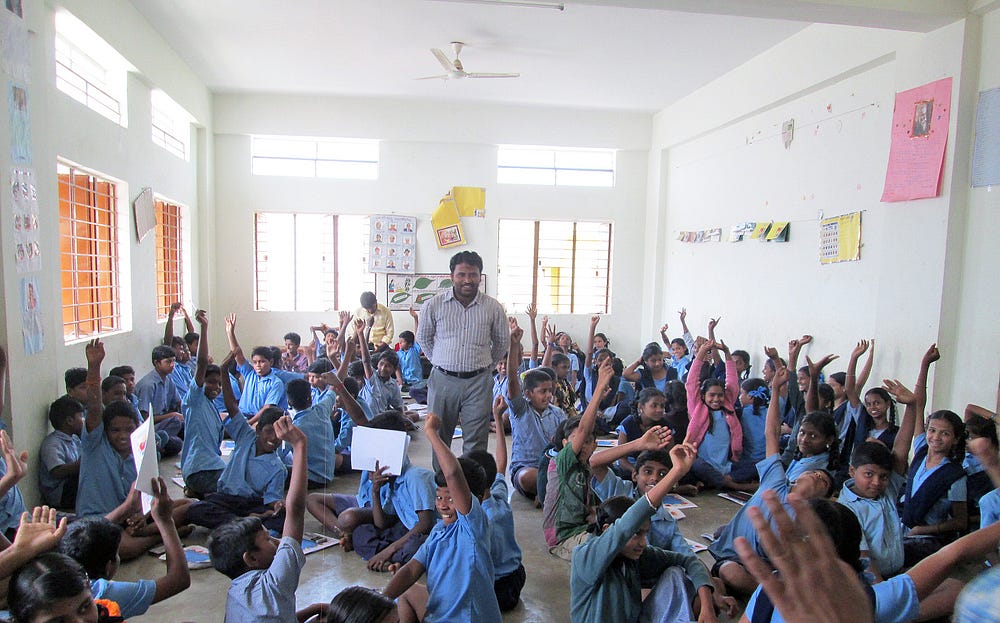By Arogya World Intern Meghna Phalke, Grade 11, San Jose, CA

The author with Indian students participating in the Healthy Schools program created by Arogya World in partnership with the Agastya International Foundation.
Over the summer, I had the opportunity to work as an intern for Arogya World in India where I attended four different trainings for four different groups of bright young children. It was a great pleasure to experience, despite the language barrier!
I am from California, and grew up in a Bengali household, so I had no exposure to local Indian languages like Kannada before this trip. When I spoke to Nalini Saligram, the CEO of Arogya World, she told me that it was likely I would not understand the trainings. She was right; I did not understand any of the dialogue between the teachers and the students. However, this did not prevent me from understanding the importance of the work being done.
The trainings I sat in on occured through a partnership between Arogya World and Agastya International Foundation. The first two trainings were at schools in Bangalore, and the second two days were at the Agastya Campus. These trainings were Diabetes Awareness Programs for the students. The program is split into two courses: year one and year two. After going through the Year One course, which covers the fundamentals of nutrition and health, the students go through the Year Two course, which is more theoretical and community-focused. The ultimate goal of these programs is to not only educate the students about diabetes prevention, eating correctly, and maintaining healthy habits, but also to have the students share what they learn within the rural communities that they call home.

Unfortunately, diabetes has been spreading in rural villages in India, and because it is a chronic disease that often has a very slow progression without obvious symptoms, there is little awareness about it. That is where this program comes in: to educate and prevent the further spread of diabetes by arming kids with the information they need to protect themselves and their families.
The Year One course includes a questionnaire and five activities, and the Year Two course includes five activities. Agastya gave me English copies of the exercises before each session so I could keep up to some extent. The KAP questionnaire of the Year One course asks the students about their health habits, and Arogya World uses the students’ answers for data and analysis. After going through the packet, the kids engaged in activities from a health version of snakes and ladders (similar to Chutes and Ladders) to a traffic signal game with foods. Similarly, the Year Two course included activities from a crossword to a skit. It was evident that the teachers and staff were determined to make the lessons engaging and memorable for the students. Every activity was elaborately planned out and carefully orchestrated.

The most incredible thing to me, as I walked around taking pictures and videos, was the enthusiasm and joy that so evidently shone through on everyone’s faces, students and instructors alike. The kids were thrilled to be there, and they engaged in all of the activities with full energy. They were smiling the entire time, and were eager to answer any questions, shooting their hands in the air and jumping up to speak. The teachers, no matter what difficulties arose, did not show signs of frustration ever. They were just as thrilled to be there as the students, and it was clear to me how much effort they put into this program.

The language barrier stopped me from understanding the specifics of what was being said, but what I did understand was how fully invested every single person — children, staff, and program leaders — was, and for me this was a wonderful, life-changing thing to see. The volunteers who committed so much to this program don’t do so for selfish reasons; they don’t get anything out of it except for bettering the lives and futures of these children in their own way. Coming from a very privileged part of the world, this warmed my heart. Simply put, this program made me happy. Because everyone involved cares and acts, which ends up having priceless benefits — including the possibility that these children, from a rural village in India, can have a healthy, happy, and bright future.
